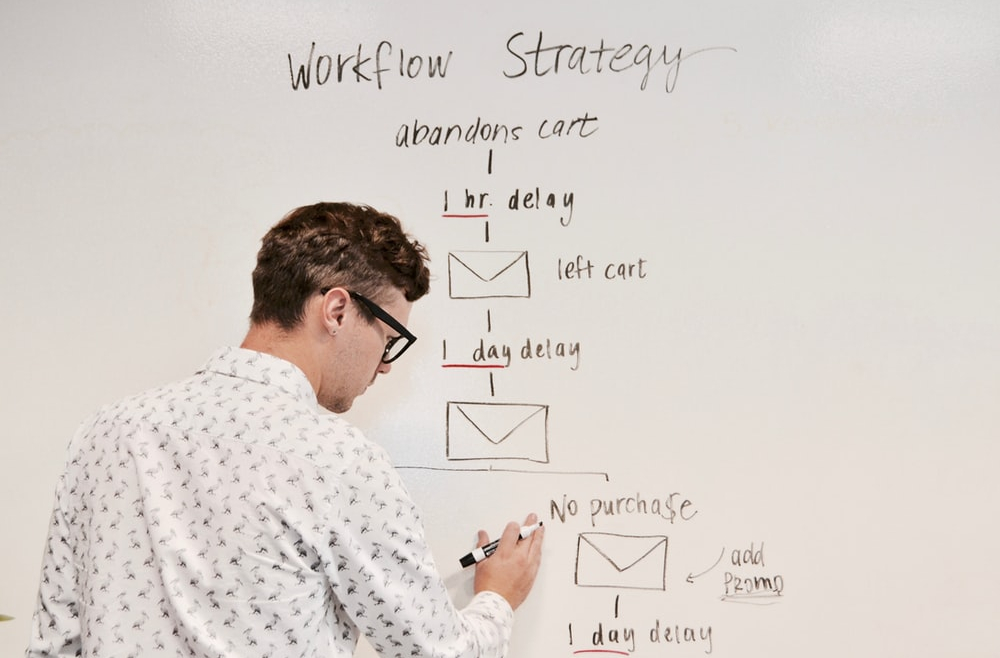Some trends are simply aesthetic. It is enough to make minor changes to their settings that will not go beyond the interface. Other should constantly influence results and profits. It is very important to keep abreast to create something that your visitors and clients will like.
1. PURCHASES FROM ALL DEVICES
It is hard to imagine that the first iPhone was released just a few years ago. Before that, reading articles from the phone was convenient. Filling out a long contact form or going through the registration process was incredibly difficult. It was before.
Now purchases from mobile devices account for about 40% of the total profit of online stores. It is predicted that this figure will grow to 70% in the next few years. Another fact is even more surprising. In 85% of cases, they begin to purchase one device and finish already from another.
Therefore, your site should look and work flawlessly on both PC and mobile devices and tablets. It is necessary to ensure a synchronized and consistent user experience because during the purchase process they can use different devices.
And any deviations in the purchase process can affect sales.
2. GENERAL USER INTERFACE TEMPLATES
Steve Jobs once said: “Design is not how a thing looks. This is how it works. ”
There is a huge difference between art, simply beautiful design, and the website’s user experience, which helps shoppers find what they want and buy it in bulk.
Thus, much attention is paid to the design of the user interface (UI) of the site to ensure that there are no inconsistencies in navigation. You need to check whether users can search, browse, select, and add products to the basket on the fly.
3. PERSONALIZATION AND CONTEXT PURCHASES
Using common template elements of the user interface will allow users to feel more freely and confidently. But this will lead to the fact that most sites, including competitor sites that your customers are likely to visit, will resemble each other.
Fortunately, the next major trend is personalization. It implies changes to the home page depending on what products the visitor viewed the last time
“Contextual marketing” is still in its infancy, but is already making a lot of noise. Indeed, 89% of managers indicate “user experience” as the main factor in differentiation.
Amazon is one step ahead in many areas. Including their main page is personalized and reflects your previous purchases, search history and recommendations for similar products.
4. CONFIGURING GEOTARGETINE
Last year, the number of Internet users from mobile devices finally surpassed the number of desktop users. This suggests that more and more people use the Internet on the go.
One very interesting point in this is the GPS integration and the ability to determine your location. This type of advertising can equate an online store to a regular store.
5. VIDEO OF GOODS
90% of buyers confirm that having a product video helps them make a purchasing decision.
Obviously, 71% of people think that video describes a product better than a canvas of text.
Statistics completely confirm this fact. People buy 73% more if they watch a video about a product. The good news is that such videos should not be huge, full-blown ad campaigns.
Users just want to see what they get. Therefore, show (do not tell) how to use the product, emphasize so that its meaning and unique features are clear.

6. MULTI-CHANNEL MARKETING
Now we spend more time with a phone or tablet in our hands than behind a computer monitor. This in turn affects how we buy online. 85% of buyers begin the purchase process from one device, and end with another.
You can stumble upon a link from a mobile phone somewhere on social networks, and return after a purchase from your computer. It often happens that goods are put into the basket at work from one computer, and the purchase is made at home.
You should pay attention to this, because the number of users who behave in this way continues to grow.
By Anisha Willis

